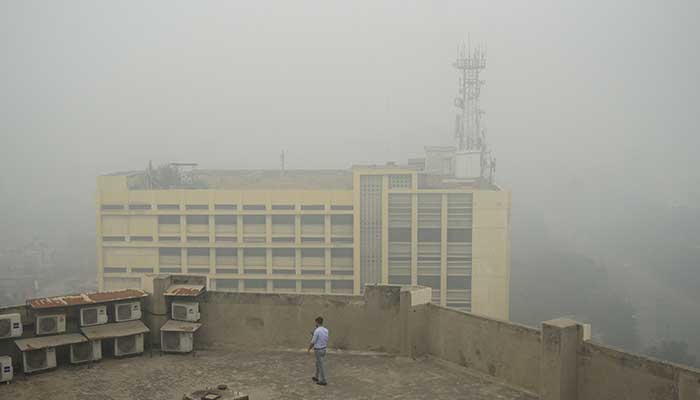LAHORE: The Punjab government has announced relaxing smog restrictions following signs of improvement in air quality in Lahore and other cities of the province.
According to a notification issued by the DG Environment Dr Imran Hamid Sheikh, construction work has been allowed in four districts including Lahore while kilns will also be able to work on zigzag technology.
Furthermore, the government and private offices have also been allowed to work with 100% staff. The decision will be applicable to Lahore, Gujranwala, Multan and Faisalabad.
The notification also stated that heavy traffic will be able to enter the districts from Monday to Thursday.
The decision to close shops, markets and shopping malls at 8pm in all four districts has been maintained, while indoor and outdoor dining in restaurants will be allowed until 10pm, and barbecues will not be allowed without installing a hood system.
The air quality in Lahore has shown signs of improvement as the air quality index (AQI) dropped below 300 on Sunday, continuing to remain in that range on Monday.
The easing conditions mark a positive shift in the metropolis that has been engulfed in smog for almost over a month, moving down to the fourth rank in the rankings of the list of the world’s most polluted cities which it previously dominated.
On Monday, the AQI was recorded at 267 in the provincial capital around 9:30 this morning, registering the fourth worst air quality in the world while the (PM2.5) pollutants in the air amounted to 191.8, which is 38.4 times higher than the World Health Organisation’s (WHO) annual air quality guideline value.
This seasonal battle against air pollution in Punjab is exacerbated by cold, heavy air that traps dust, smoke, and emissions, particularly from farm fires.
Last week, the authorities in Lahore and Multan reopened schools after a more than week-long closure due to hazardous pollution levels. Students were directed to wear face masks while outdoor sports remained suspended at all educational institutes.
Breathing toxic air has catastrophic health consequences, with the World Health Organisation (WHO) warning that strokes, heart disease, lung cancer and respiratory diseases can be triggered by prolonged exposure.








